National Parks in Florida: A Comprehensive Guide for Outdoor Enthusiasts
Florida, the Sunshine State, offers visitors an array of unique and breathtaking natural attractions. Among these gems are its national parks, which showcase the diverse landscapes, wildlife, and marine life found throughout the region. With their pristine beaches, vibrant coral reefs, lush wetlands, and rich history, these parks attract millions of tourists every year, providing unforgettable experiences and ensuring the preservation of these natural wonders for generations to come.
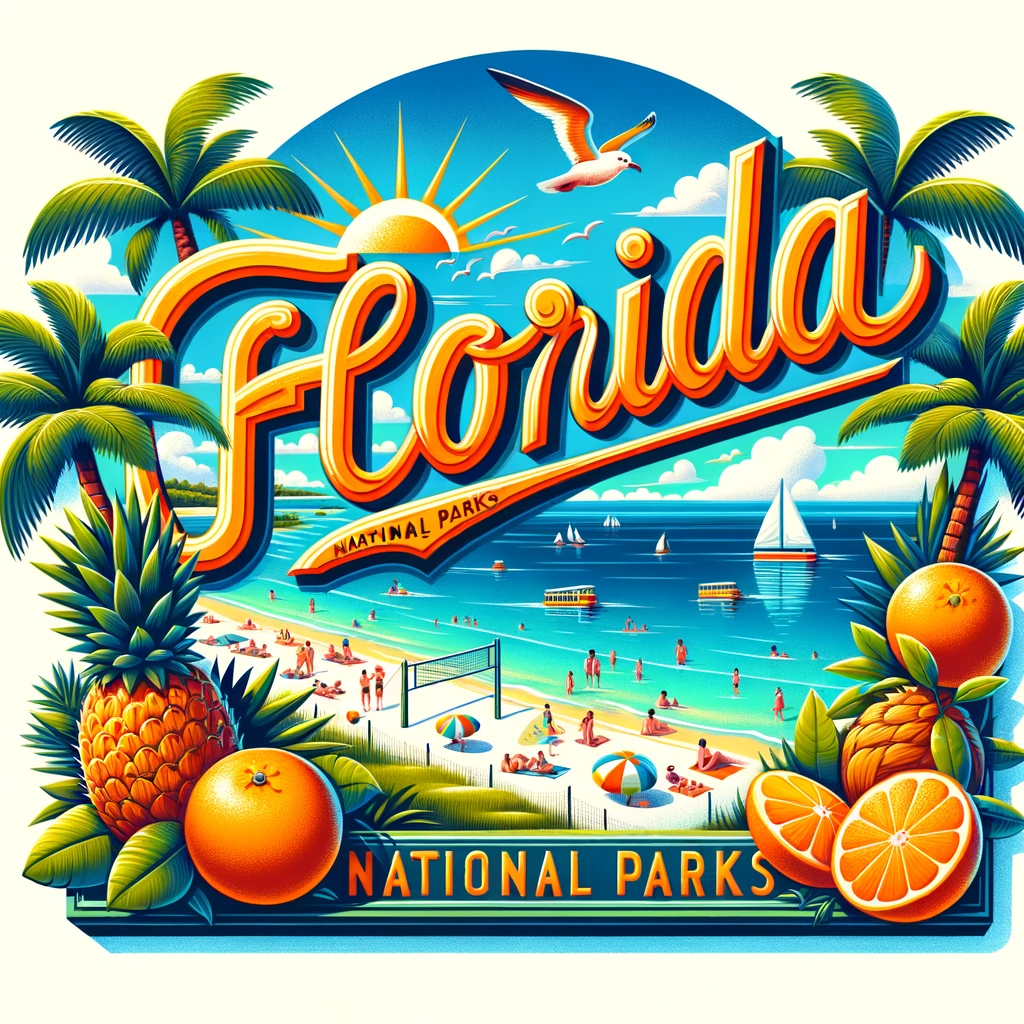
National parks in Florida allow outdoor enthusiasts to engage in various activities, such as hiking, bird-watching, snorkeling, and kayaking. Moreover, these parks feature an array of unique landmarks that trace the state's fascinating history and demonstrate the delicate balance between humans and the environment. Visitors can expect to learn about native flora and fauna, uncover hidden treasures, and explore ecosystems that are specific to Florida's geography.
Key Takeaways
- Florida's national parks provide diverse landscapes, offering outdoor activities and opportunities for wildlife spotting.
- Unique landmarks within the parks tell the story of Florida's rich history and the connection between humans and nature.
- Visitors can learn about the state's flora, fauna, and ecosystems, adding an educational aspect to their national park experience.
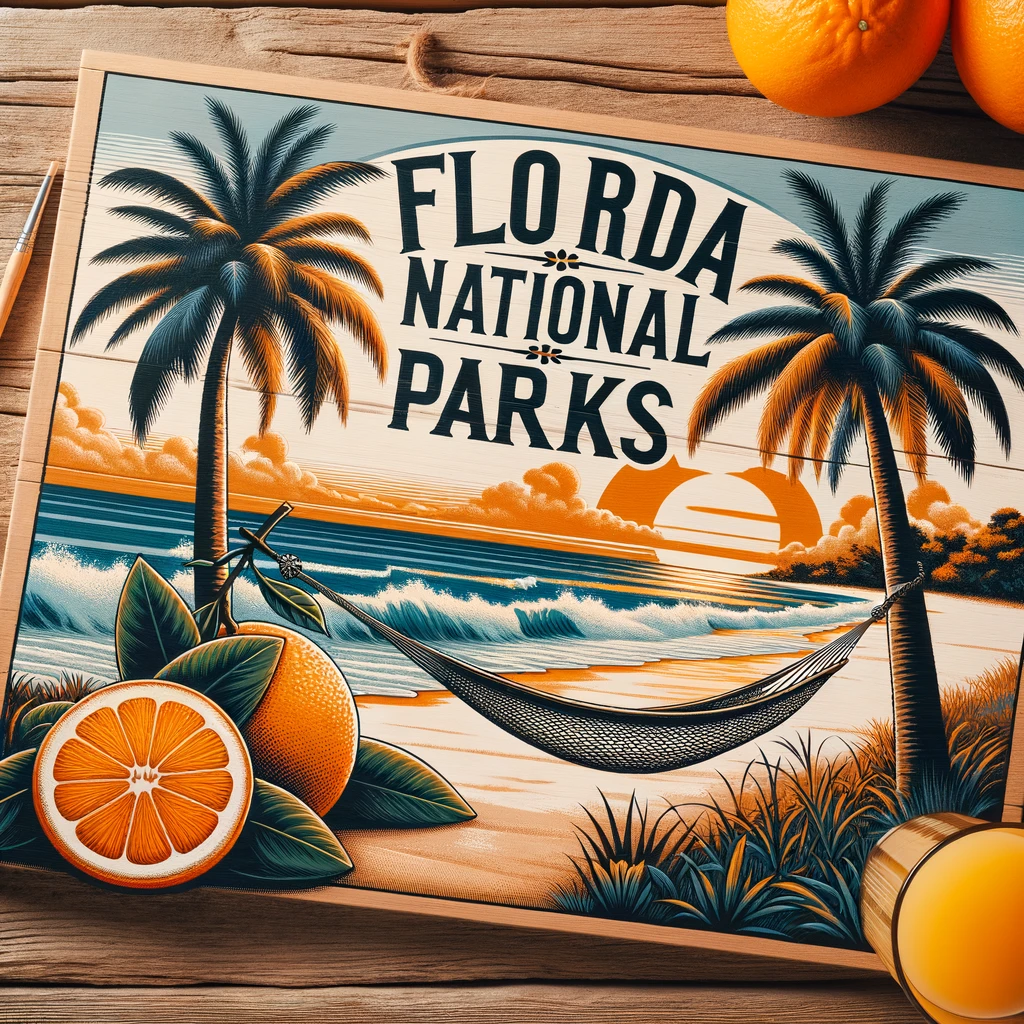
Overview of Florida's National Parks
Florida is home to a diverse array of national parks, each offering unique experiences and breathtaking landscapes. From the lush wetlands of Everglades National Park to the historical significance of Castillo de San Marcos National Monument, visitors are sure to find an adventure that suits their interests.
Everglades National Park is a massive subtropical wetland that spans across 1.5 million acres. This UNESCO World Heritage site is home to a rich variety of plant and animal life, including the endangered Florida panther and the American crocodile. Visitors can embark on hiking trails, boat tours, and bird-watching excursions to fully immerse themselves in the park's unique ecosystem.
Biscayne National Park primarily consists of aquatic territory, preserving the vibrant coral reefs and marine habitats surrounding the Biscayne Bay area. Visitors can engage in activities such as snorkeling, scuba diving, and sailing while exploring the park's crystal-clear waters.

Dry Tortugas National Park is located approximately 70 miles west of Key West and is accessible only by boat or seaplane. The park encompasses several small islands and the 19th-century Fort Jefferson, offering a mix of history and natural beauty. Snorkeling, bird watching, and stargazing are popular activities in this remote and picturesque destination.
Big Cypress National Preserve shares a border with Everglades National Park and protects over 700,000 acres of freshwater wetlands. Visitors can enjoy hiking, fishing, and wildlife viewing while exploring the diverse habitats present in the preserve.
Canaveral National Seashore, situated near Titusville and New Smyrna Beach, offers a tranquil refuge for both humans and wildlife alike. The pristine beaches, dunes, and lagoons provide an ideal sanctuary for thousands of plant and animal species, including numerous endangered sea turtles that nest on the shoreline.
Gulf Islands National Seashore stretches across Florida's panhandle and encompasses beautiful sugar-white beaches, historic forts, and diverse wildlife habitats. Visitors can partake in various recreational activities such as camping, hiking, and fishing.

In addition to the national parks and seashores, Florida also possesses a number of national monuments and memorials that hold historical and cultural significance. Some of these include Fort Matanzas National Monument, Fort Caroline National Memorial, De Soto National Memorial, and Castillo de San Marcos National Monument.
Whether it's soaking in the natural beauty of the state's diverse ecosystems or delving into the rich history of St. Augustine, Florida's national parks and landmarks offer countless opportunities for visitors to make lasting memories while connecting with nature and the past.

Wildlife and Marine Life
Florida is home to a diverse range of wildlife and marine life, including a variety of endangered species. The national parks within the state provide excellent opportunities for observing these animals in their natural habitats.
Land Animals
Some of the most iconic land animals in Florida's national parks include the endangered Florida panther, American alligators, and American crocodiles. The Florida panther can be found in Big Cypress National Preserve, which protects over 729,000 acres of swamp and provides a crucial habitat for this rare species1.
American alligators and American crocodiles can be found in Everglades National Park, where they coexist with various other species like great blue herons, dolphins, and manatees2. Other land animals within the parks include:
- Bears
- Various bird species
- Small mammals and reptiles
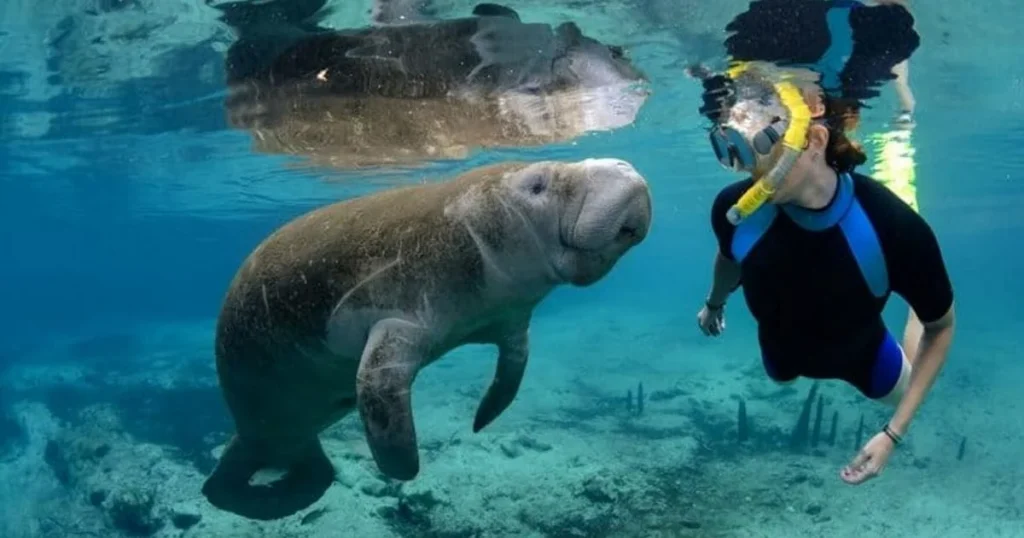
Marine Animals
The marine ecosystems in Florida's national parks support a rich and diverse array of marine life. Biscayne National Park, for example, is home to a variety of fish and other marine animals such as manatees and dolphins3. In addition, Florida Keys National Marine Sanctuary and other protected areas within the parks4 host several species of sea turtles, which are essential for maintaining the health of the marine environment.
Some noteworthy marine animals found in Florida's national parks include:
- Numerous fish species
- Manatees
- Dolphins
- Sea turtles
Florida's national parks provide unique opportunities to experience and appreciate the state's incredible wildlife and marine life, making them an essential part of the Florida ecosystem and visitor experience.
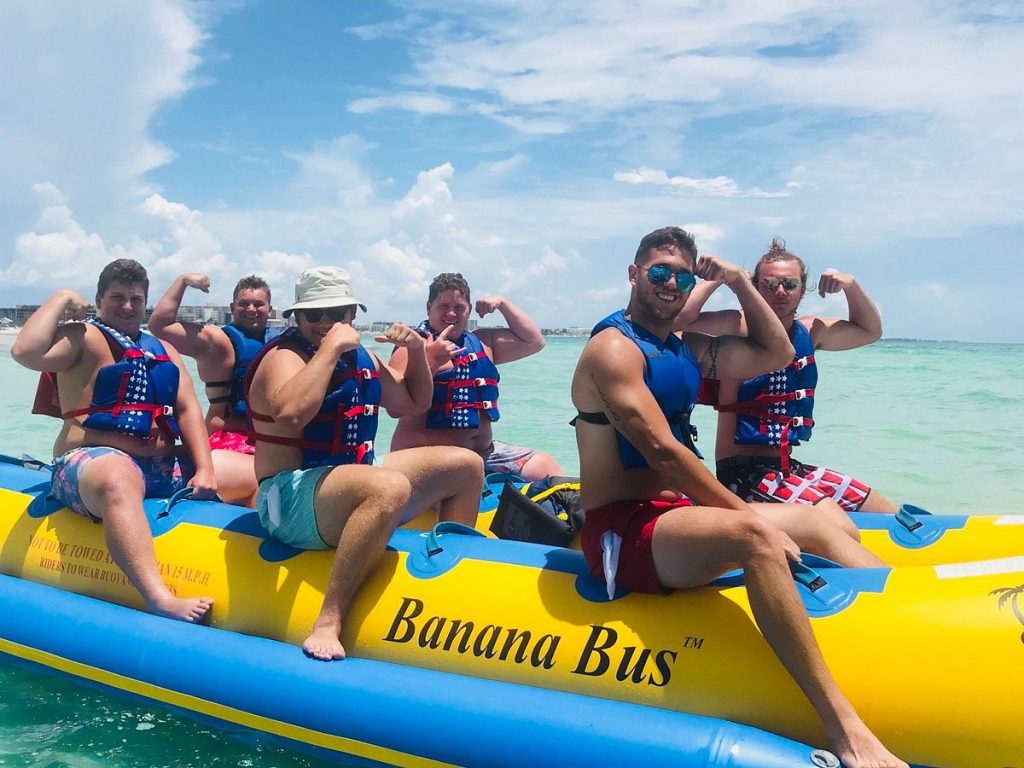
Outdoor Activities
Water Activities
Florida's national parks provide a plethora of water activities for adventure seekers. Snorkeling and diving enthusiasts can explore the crystal-clear waters of Biscayne National Park, discovering vibrant coral reefs and an abundance of marine life. Kayaking and canoeing are popular activities in the Everglades, allowing visitors to paddle through intricate mangrove forests and experience the unique ecosystem up close. Additionally, many parks offer excellent swim and fishing opportunities, making Florida a perfect destination for water activity enthusiasts.
Land Activities
For those who prefer land-based exploration, Florida's national parks offer a variety of exciting activities, from hiking and camping to biking and off-roading. Visitors can trek through fascinating landscapes, ranging from dense forests in the northern region to sprawling wetlands in the south. Everglades National Park alone covers over 1.5 million square acres, providing ample space for long hikes and backcountry camping. Biking enthusiasts will also find several parks offering well-maintained trails to satisfy their adventurous spirits.
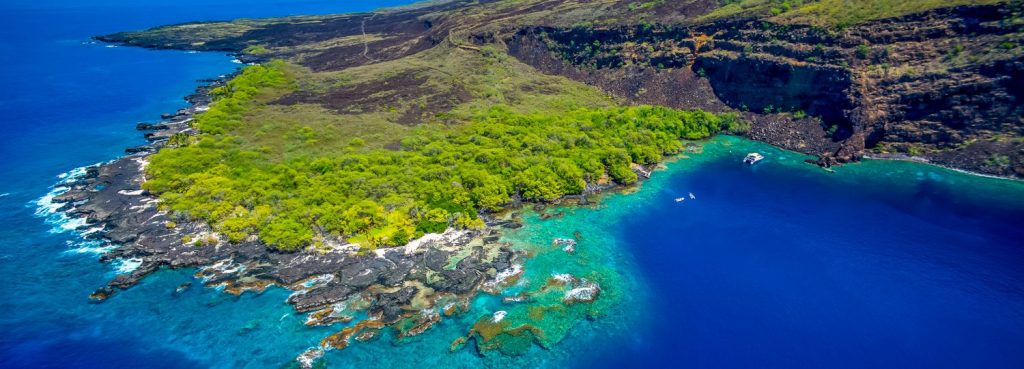
Wilderness Exploration
The diverse habitats within Florida's national parks provide incredible opportunities for wilderness exploration. Ecotourists can venture into the unspoiled environments on foot, by kayak, canoe, or even on an exhilarating airboat or swamp buggy ride. The St. Marks National Wildlife Refuge is an excellent example, sheltering 80,000 pristine acres of coastal marshes, islands, and estuaries. The parks' inhabitants, ranging from prehistoric tribes to pineapple farmers and presidents, played a role in shaping their rich history. As visitors explore these stunning landscapes, they can deepen their appreciation for Florida's natural and cultural heritage.

Unique Features and Landmarks
Florida's National Parks offer a wide range of historical sites, natural landscapes, and key attractions that make them an ideal destination for travelers seeking adventure and knowledge. This section will highlight some of the most significant and interesting aspects of these parks.
Historical Sites
Many of Florida's National Parks contain important historical landmarks that provide a unique glimpse into the past. One such site is the massive masonry fort, Fort Jefferson, in Dry Tortugas National Park. Fort Jefferson served as a significant military base during the 19th century. Another historical site worth visiting is the Kingsley Plantation in Timucuan Ecological and Historic Preserve, which gives insights into the lives of enslaved people and plantation owners.
Fort Pickens, part of Gulf Islands National Seashore, and the Kennedy Space Center are other significant historical sites where visitors can learn about the US military and space exploration history, respectively.
Natural Landscapes
Florida's National Parks are known for their diverse and pristine natural landscapes. The Coral Reefs in Biscayne National Park near Homestead, FL, offer breathtaking underwater ecosystems, while the sunken shipwrecks provide a unique opportunity for exploration and diving.
The preserved mangroves in the parks such as Everglades National Park and Ten Thousand Islands National Wildlife Refuge serve as an essential habitat for numerous species and help prevent coastal erosion. The beautiful Gulf Coast showcases barrier island formations with sandy beaches and serene lagoons, ideal for relaxation and nature enthusiasts.
Key Attractions
There are several iconic attractions to visit within Florida's National Parks that cater to a variety of interests. Shark Valley in Everglades National Park offers bike and tram tours to observe the diverse wildlife, including alligators and various bird species, in their natural habitat.
The turquoise waters of Dry Tortugas National Park surrounding the Garden Key and the Loggerhead Key are perfect for snorkeling and swimming, while Boca Chita Key and Elliott Key in Biscayne National Park offer picturesque camping and picnic spots.
The diverse landscapes of Florida's National Parks, including the mangrove forests, barrier islands, and sandy beaches, are truly a treasure that provides visitors with unforgettable experiences and memories. Exploring these unique features and landmarks is an essential part of any trip to this remarkable region.
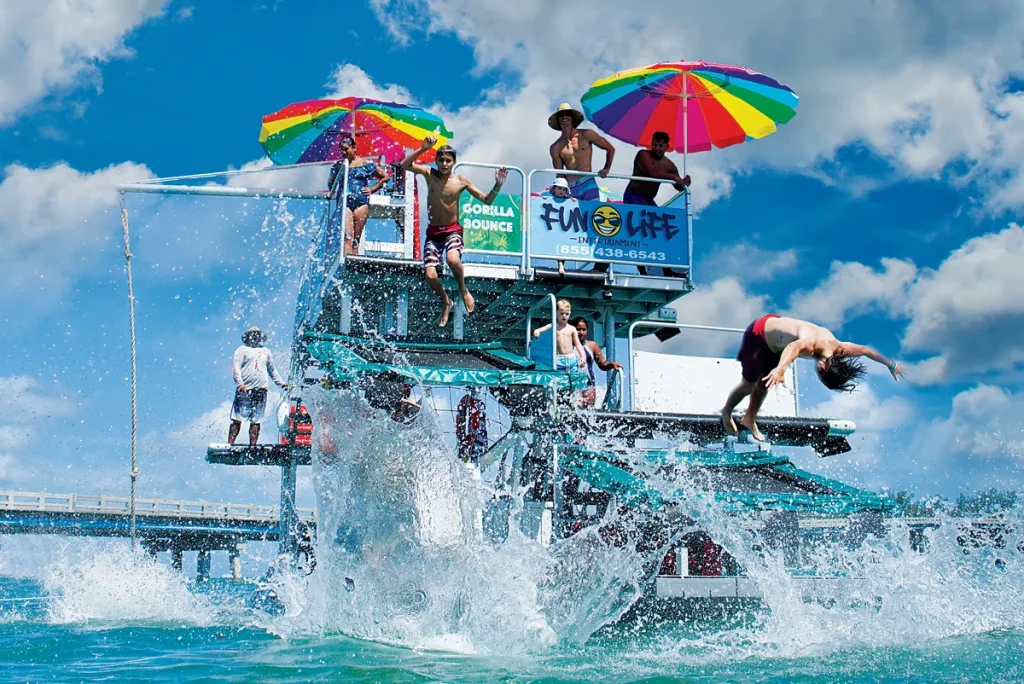
Travel Information
Visiting Florida's national parks offers a unique and diverse experience for nature lovers. Whether you're interested in paddling through mangrove forests, exploring protected seashores, or camping under the stars, there's something for everyone.
One of the most famous national parks in Florida is the Everglades National Park, which spans over 1.5 million acres at the southern tip of the state. With a variety of ecosystems, it's a haven for rare and endangered species like the Florida panther. The park can be accessed from Homestead, FL, and offers various activities such as hiking, paddling, and wildlife viewing.
For those looking to explore Florida's Atlantic Coast, Canaveral National Seashore is an excellent destination. The barrier island is composed of dune, hammock, and lagoon habitats, providing sanctuary for thousands of plant and animal species. Visitors can enjoy walking along the beach, birdwatching, or even self-guided kayak tours through the park's waterways.
Paddling enthusiasts might consider visiting St. Marks National Wildlife Refuge, which offers over 80,000 acres of coastal marshes, islands, tidal creeks, and estuaries. With 43 miles of Gulf Coast shoreline, it's a beautiful spot for kayaking or canoeing, as well as birdwatching and wildlife viewing.
For those who prefer exploring on foot, many of Florida's national parks offer excellent hiking opportunities. Well-maintained trails can be found throughout the parks, often providing scenic views and opportunities to spot wildlife. Just make sure to wear sturdy shoes and bring plenty of water on your hikes.
Camping is another great way to experience Florida's national parks and seashores. Many parks offer well-equipped campgrounds, making it easy for visitors to spend a night or two under the stars. Some campgrounds require reservations, so plan ahead and book your space when possible.
Lastly, some parks in Florida can be accessed via ferry, adding a unique element to your trip. By taking a ferry, you'll be able to experience the beauty of Florida's coastlines from a different perspective and easily travel between parks and nearby attractions.
In summary, visiting Florida's national parks allows for a range of outdoor activities in a variety of landscapes. From paddling along the coast to camping in the Everglades, adventure awaits you in the Sunshine State.

Flora and Fauna
Flora
Florida's national parks are home to a diverse range of plant species, with some of the most notable plant life being found in Everglades National Park and Biscayne National Park. One of the most dominant plant communities in these parks are the mangroves. These salt-tolerant trees provide a critical habitat for numerous fish and bird species while also stabilizing shorelines and preventing erosion.
Pine Flatwoods are another prevalent plant community in Florida's national parks, characterized by a mixture of slash pines, palmettos, and grasses. This fire-dependent ecosystem supports diverse wildlife and serves as a habitat for many endemic plants and animals.
Hardwood Hammocks are yet another essential plant community within these parks, consisting of dense forests with a closed canopy. These areas are home to a wide variety of epiphytic plants, such as bromeliads and orchids4, and provide vital shelter for numerous animal species.
Birdlife
National parks in Florida are rich in birdlife, offering critical habitats for both resident and migratory bird species. The heron family, including Great Blue Herons, is commonly seen in these parks, often wading through shallow waters in search of fish.
Another emblematic bird species in Florida's national parks is the Anhinga, also known as the snakebird. The Anhinga can be observed diving for fish in freshwater wetlands and then perching on branches to dry their wings, providing a unique wildlife-viewing opportunity for visitors to the parks.
In summary, the diverse plant communities and rich birdlife found within Florida's national parks contribute to the uniqueness and ecological relevance of these protected areas. Visitors can expect to encounter varying landscapes, ranging from sprawling mangrove forests to pine flatwoods, and have the opportunity to observe a multitude of fascinating bird species.

Other Nearby Attractions
When visiting Florida's National Parks, don't miss out on the other attractions nearby. In the northeastern part of the state, you will find the Timucuan Ecological & Historic Preserve. This unique area comprises over 46,000 acres of wetlands, waterways, and historical sites, offering a glimpse into 6,000 years of human history. Visitors can explore the preserve's diverse ecosystems, and learn about its fascinating cultural heritage through various exhibits and interpretive programs.
Another worthwhile destination is the Apalachicola National Forest, located near Tallahassee. This expansive forest covers more than half a million acres and is home to a diverse range of wildlife, including the endangered red-cockaded woodpecker and Florida black bear. Here, visitors can enjoy various recreational activities such as hiking, biking, camping, and bird watching.
If you're visiting southern Florida, the Dante Fascell Visitor Center is a must-see. Located within Biscayne National Park, this visitor center features exhibits on the park's diverse ecosystems and provides educational resources for visitors of all ages. The center also offers ranger-led programs, guided tours, and access to the park's beautiful natural areas.
While exploring Florida's National Parks, take the opportunity to experience the state's vibrant culture and history in its capital city, Tallahassee. The city offers an array of attractions and activities, including a plethora of museums, historic sites, and parks. It's a great place to unwind and immerse yourself in Florida's rich heritage after exploring its stunning National Parks.
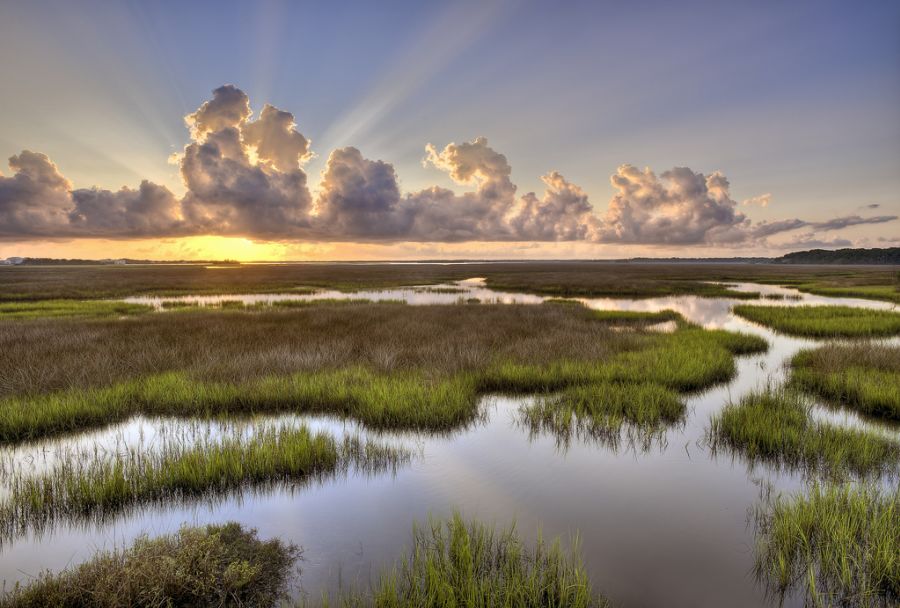
Conclusion
Florida has a diverse array of National Parks that offer visitors a unique experience. The parks showcase the state's rich natural beauty, serving as important habitats for many species and providing fascinating insights into the region's history.
The protected areas, such as Biscayne National Park, preserve the delicate ecosystems of aquamarine waters, emerald islands, and coral reefs teeming with marine life. These parks not only provide a haven for wildlife, but also offer visitors opportunities for snorkeling, boating, and fishing.
In addition, Florida's National Parks are home to significant historical and cultural sites. For example, Big Cypress National Preserve conserves the vast Big Cypress Swamp, which plays an important role in the welfare of the nearby Everglades ecosystem. The preserve is inhabited by a variety of bird species, as well as alligators and other wildlife, ensuring that visitors have ample opportunities for hiking, birdwatching, and photography.
In summary, Florida's National Parks are essential to the preservation of the state's natural and cultural heritage. They provide visitors with unforgettable encounters with Florida's unique landscapes, history, and wildlife. Whether you're an adventure seeker, history buff, or a nature lover, the National Parks in Florida have something for everyone.

Frequently Asked Questions
What are the must-see Florida national parks?
Florida is home to several incredible national parks, each offering unique experiences and landscapes. Some of the must-see national parks include Biscayne National Park, which features beautiful aquamarine waters, coral reefs, and rich wildlife, and Everglades National Park, a vast ecosystem of wetlands and forests that provide critical habitat for numerous species, including the Florida panther and American alligator.
Which Florida national parks have the best camping facilities?
Many of Florida's national parks offer camping facilities, allowing visitors to connect with nature overnight. Among the top choices for camping are Everglades National Park, which has several campgrounds with a range of amenities, and Dry Tortugas National Park, where visitors can camp on the picturesque Garden Key.
What is the closest national park to me in Florida?
The closest national park to you in Florida will depend on where you are located in the state. To determine the closest park, visit the Florida State Parks website or check the U.S. National Park Service's interactive map to find a list of national parks in Florida.
How can I access the Dry Tortugas National Park?
Dry Tortugas National Park, located about 70 miles west of Key West, is accessible by boat or seaplane. Several companies offer ferry and seaplane services from Key West. It's important to make reservations in advance, as transportation is limited and the park is a popular destination.
What makes Florida's national parks unique compared to other states?
Florida's national parks boast a combination of stunning landscapes, diverse ecosystems, and significant historical and cultural sites. From the pristine coral reefs of Biscayne National Park to the subtropical wilderness of Everglades National Park, Florida offers a unique blend of natural beauty, wildlife, and heritage that cannot be found in other U.S. states.
What is the largest national park in Florida?
Everglades National Park is the largest national park in Florida, covering about 1.5 million acres. It is not only a national park but also a World Heritage Site, as it protects a diverse ecosystem that ranges from freshwater sloughs and sawgrass prairies to mangrove forests and estuarine habitats.
Footnotes
- https://www.nps.gov/state/fl/index.htm ↩
- https://floridatrippers.com/national-parks-in-florida/ ↩
- https://www.nps.gov/bisc/ ↩
- https://myfwc.com/fishing/saltwater/recreational/marine-life/ ↩ ↩2
Charlie is Editor-in-Chief of Sea Magazine